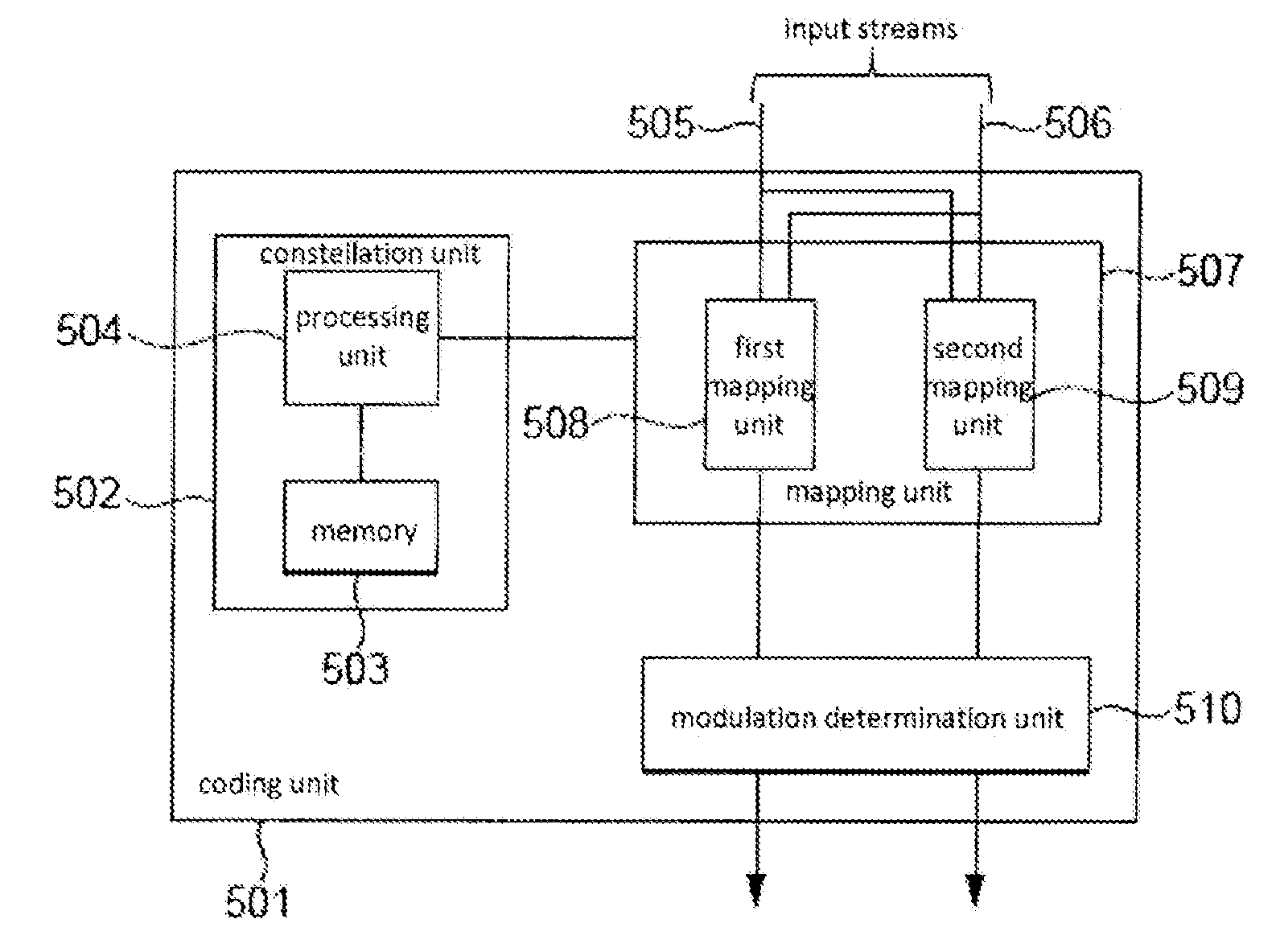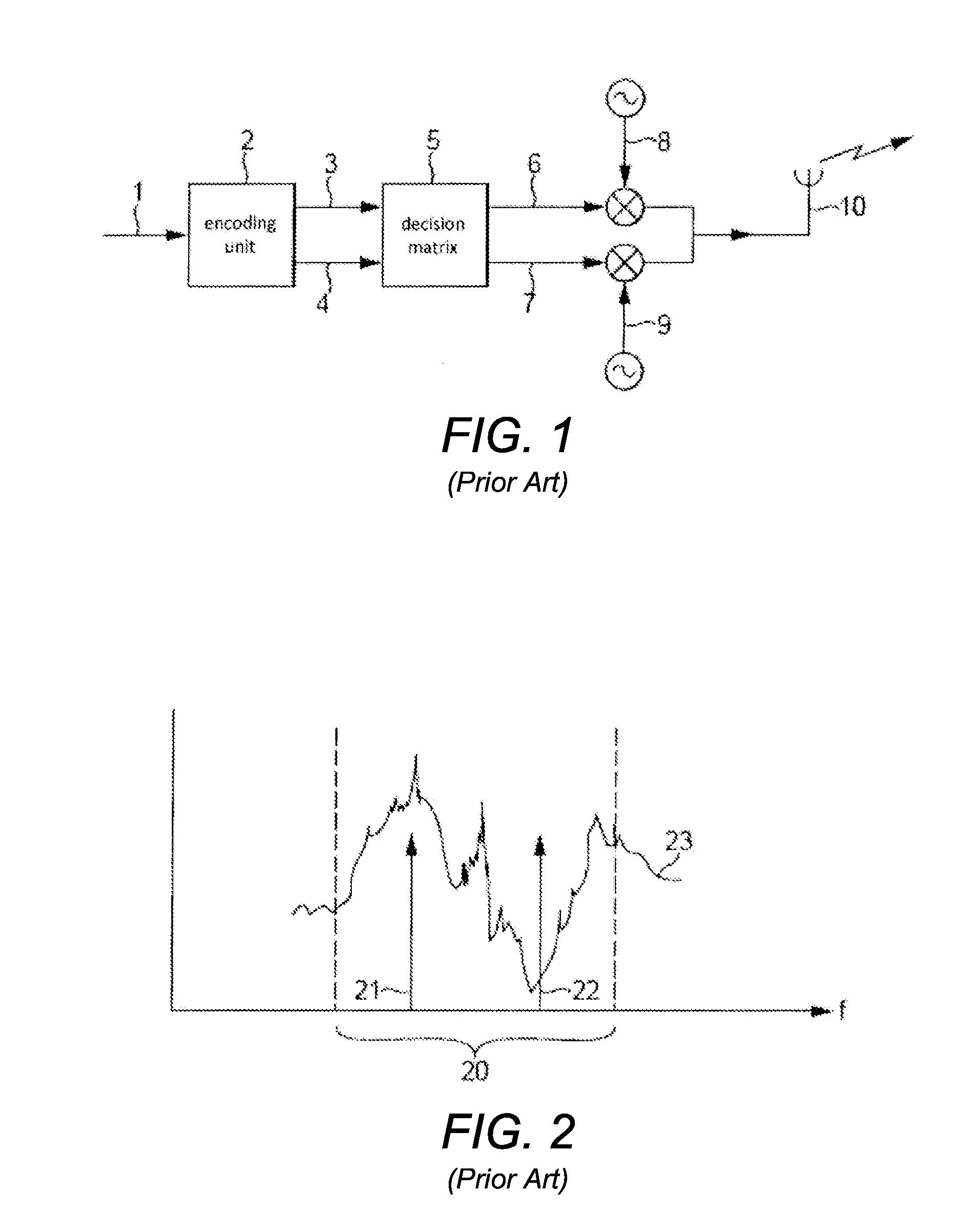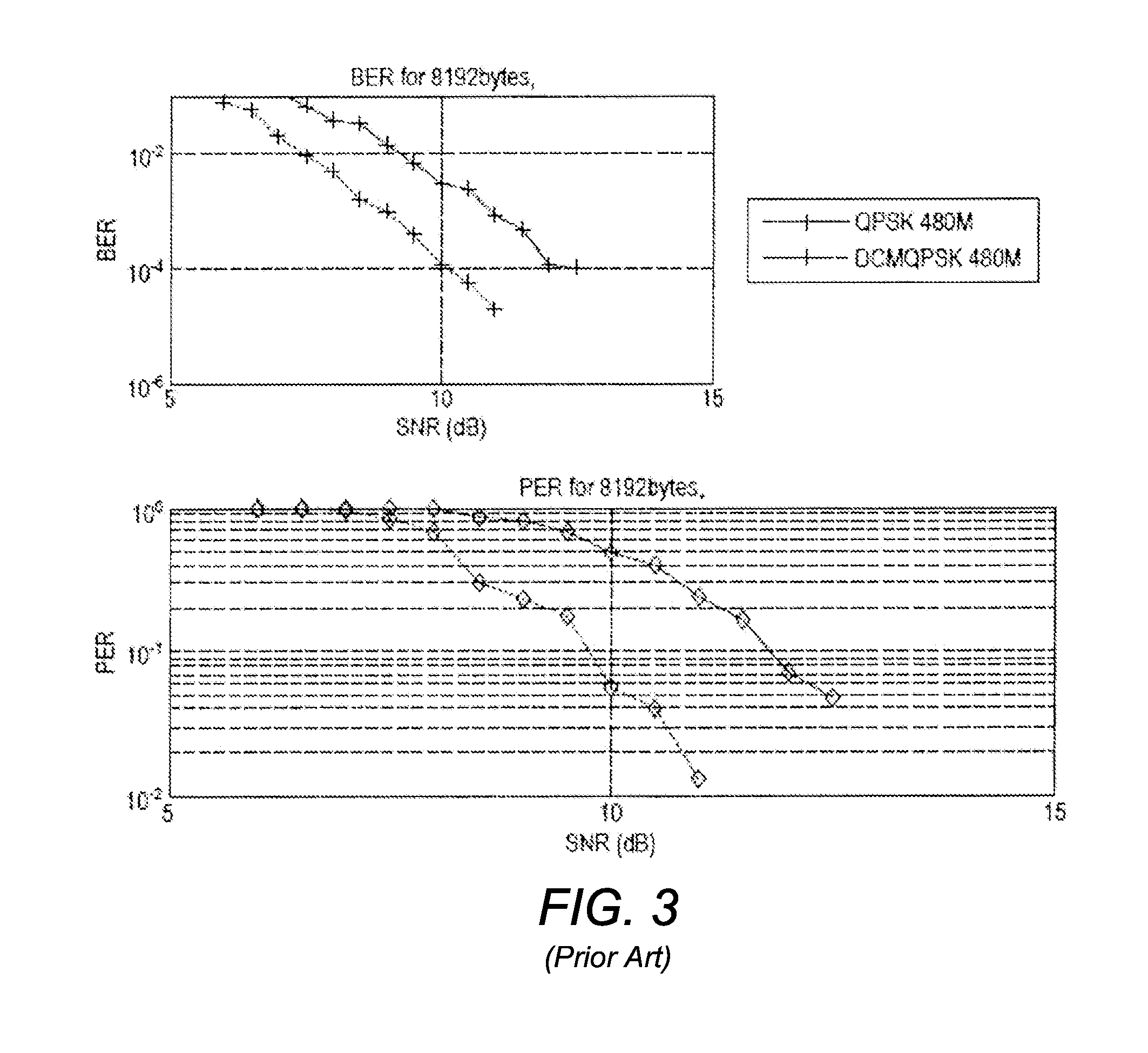Dual Carrier Modulation
a dual-carrier, modulation technology, applied in the field of coding units, can solve problems such as complex decoding of modulated signals
- Summary
- Abstract
- Description
- Claims
- Application Information
AI Technical Summary
Benefits of technology
Problems solved by technology
Method used
Image
Examples
Embodiment Construction
[0071]A coding unit may be arranged to determine the amplitude and phase modulations that should be applied to the two carrier signals of a DCM scheme. The coding unit may be arranged to first determine a group of modulation points that represent the different amplitude / phase modulation combinations that may be applied to the carrier signals. The coding unit may then be arranged to associate a data symbol to be transmitted by the carrier signals with two of the modulation points. This may be achieved by using a first mapping function to map the data symbol onto a first modulation point and a second mapping function to map the data symbol onto a second modulation point. The first and second modulation points each carry all of the information associated with one data symbol, together with some or all of the information associated with another data symbol. The coding unit may then be arranged to determine that the amplitude and phase modulation associated with the first modulation poin...
PUM
 Login to View More
Login to View More Abstract
Description
Claims
Application Information
 Login to View More
Login to View More - R&D
- Intellectual Property
- Life Sciences
- Materials
- Tech Scout
- Unparalleled Data Quality
- Higher Quality Content
- 60% Fewer Hallucinations
Browse by: Latest US Patents, China's latest patents, Technical Efficacy Thesaurus, Application Domain, Technology Topic, Popular Technical Reports.
© 2025 PatSnap. All rights reserved.Legal|Privacy policy|Modern Slavery Act Transparency Statement|Sitemap|About US| Contact US: help@patsnap.com



